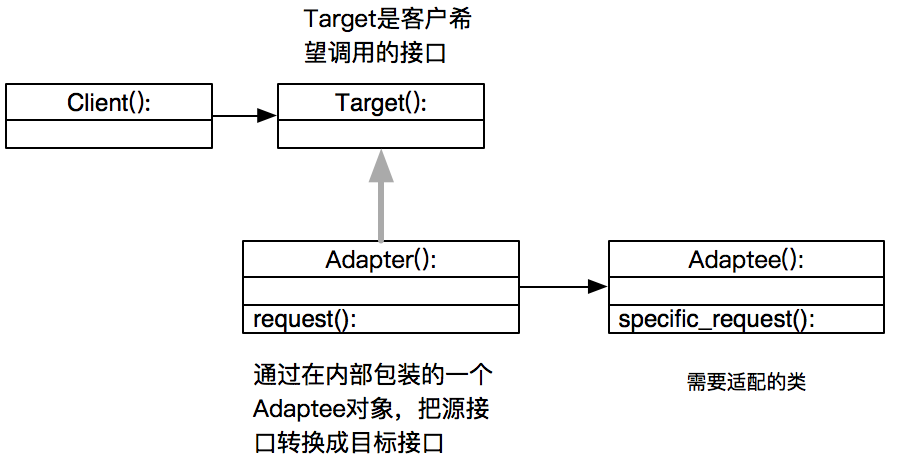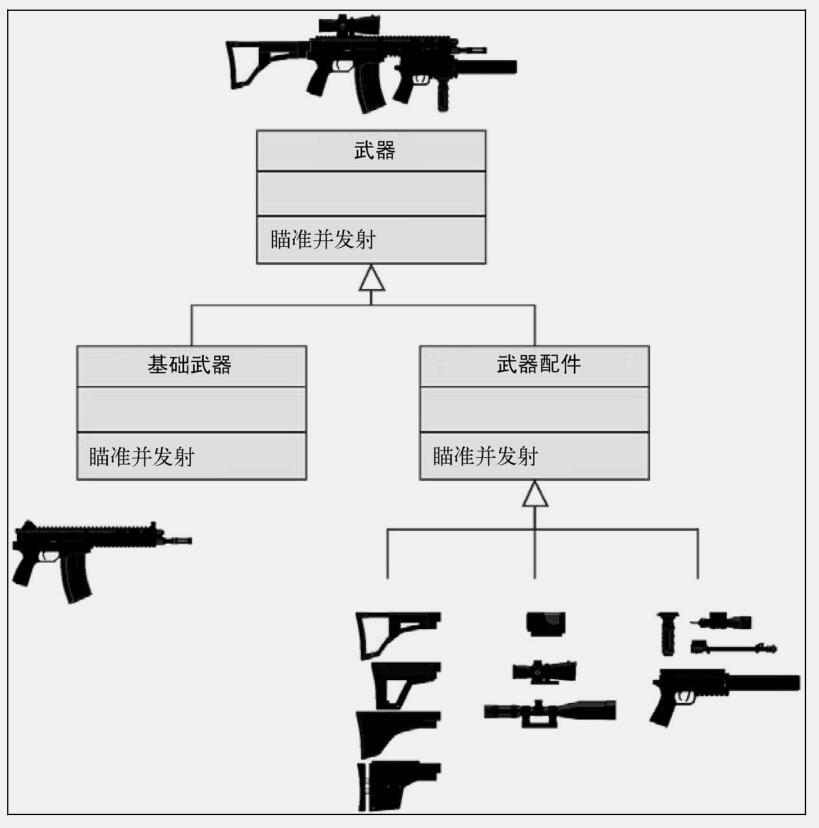1.创建型模式
单例模式
单例模式(Singleton Pattern)是一种常用的软件设计模式,该模式的主要目的是确保某一个类只有一个实例存在。当你希望在整个系统中,某个类只能出现一个实例时,单例对象就能派上用场。
比如,某个服务器程序的配置信息存放在一个文件中,客户端通过一个 AppConfig 的类来读取配置文件的信息。如果在程序运行期间,有很多地方都需要使用配置文件的内容,也就是说,很多地方都需要创建 AppConfig 对象的实例,这就导致系统中存在多个 AppConfig 的实例对象,而这样会严重浪费内存资源,尤其是在配置文件内容很多的情况下。事实上,类似 AppConfig 这样的类,我们希望在程序运行期间只存在一个实例对象
1 class Singleton(object):
2 def __init__(self):
3 pass
4
5 def __new__(cls, *args, **kwargs):
6 if not hasattr(Singleton, "_instance"): # 反射
7 Singleton._instance = object.__new__(cls)
8 return Singleton._instance
9
10 obj1 = Singleton()
11 obj2 = Singleton()
12 print(obj1, obj2) #<__main__.Singleton object at 0x004415F0> <__main__.Singleton object at 0x004415F0>
工厂模式
工厂模式是一个在软件开发中用来创建对象的设计模式。
工厂模式包涵一个超类。这个超类提供一个抽象化的接口来创建一个特定类型的对象,而不是决定哪个对象可以被创建。
为了实现此方法,需要创建一个工厂类创建并返回。
当程序运行输入一个“类型”的时候,需要创建于此相应的对象。这就用到了工厂模式。在如此情形中,实现代码基于工厂模式,可以达到可扩展,可维护的代码。当增加一个新的类型,不在需要修改已存在的类,只增加能够产生新类型的子类。
简短的说,当以下情形可以使用工厂模式:
1.不知道用户想要创建什么样的对象
2.当你想要创建一个可扩展的关联在创建类与支持创建对象的类之间。
一个例子更能很好的理解以上的内容:
- 我们有一个基类Person ,包涵获取名字,性别的方法 。有两个子类male 和female,可以打招呼。还有一个工厂类。
- 工厂类有一个方法名getPerson有两个输入参数,名字和性别。
- 用户使用工厂类,通过调用getPerson方法。
- 有一个接口类,定义创建对象的方法。一个指挥员类,接受创造者对象为参数。两个创造者类,创建对象方法相同,内部创建可自定义
在程序运行期间,用户传递性别给工厂,工厂创建一个与性别有关的对象。因此工厂类在运行期,决定了哪个对象应该被创建
# 工厂模式
class Person:
def __init__(self):
self.name = None
self.gender = None
def getName(self):
return self.name
def getGender(self):
return self.gender
class Male(Person):
def __init__(self, name):
print "Hello Mr." + name
class Female(Person):
def __init__(self, name):
print "Hello Miss." + name
class Factory:
def getPerson(self, name, gender):
if gender == ‘M':
return Male(name)
if gender == 'F':
return Female(name)
if __name__ == '__main__':
factory = Factory()
person = factory.getPerson("Chetan", "M")
建造者模式
将一个复杂对象的构建与它的表示分离,使得同样的构建过程可以创建不同的表示。
相关模式:思路和模板方法模式很像,模板方法是封装算法流程,对某些细节,提供接口由子类修改,建造者模式更为高层一点,将所有细节都交由子类实现
一个例子更能很好的理解以上的内容:
2.一个指挥员,两个创造者(瘦子 胖子),指挥员可以指定由哪个创造者来创造
from abc import ABCMeta, abstractmethod
class Builder():
__metaclass__ = ABCMeta
@abstractmethod
def draw_left_arm(self):
pass
@abstractmethod
def draw_right_arm(self):
pass
@abstractmethod
def draw_left_foot(self):
pass
@abstractmethod
def draw_right_foot(self):
pass
@abstractmethod
def draw_head(self):
pass
@abstractmethod
def draw_body(self):
pass
class Thin(Builder):
def draw_left_arm(self):
print '画左手'
def draw_right_arm(self):
print '画右手'
def draw_left_foot(self):
print '画左脚'
def draw_right_foot(self):
print '画右脚'
def draw_head(self):
print '画头'
def draw_body(self):
print '画瘦身体'
class Fat(Builder):
def draw_left_arm(self):
print '画左手'
def draw_right_arm(self):
print '画右手'
def draw_left_foot(self):
print '画左脚'
def draw_right_foot(self):
print '画右脚'
def draw_head(self):
print '画头'
def draw_body(self):
print '画胖身体'
class Director():
def __init__(self, person):
self.person=person
def draw(self):
self.person.draw_left_arm()
self.person.draw_right_arm()
self.person.draw_left_foot()
self.person.draw_right_foot()
self.person.draw_head()
self.person.draw_body()
if __name__=='__main__':
thin=Thin()
fat=Fat()
director_thin=Director(thin)
director_thin.draw()
director_fat=Director(fat)
director_fat.draw()
原型模式

用原型实例指定创建对象的种类,并且通过拷贝这些原型创建新的对象。
原型模式本质就是克隆对象,所以在对象初始化操作比较复杂的情况下,很实用,能大大降低耗时,提高性能,因为“不用重新初始化对象,而是动态地获得对象运行时的状态”。
浅拷贝( Shallow Copy ):指对象的字段被拷贝,而字段引用的对象不会被拷贝,拷贝的对象和源对象只是名称相同,但是他们共用一个实体。
深拷贝( deep copy ):对对象实例中字段引用的对象也进行拷贝。
import copy
from collections import OrderedDict
class Book:
def __init__(self, name, authors, price, **rest):
'''rest的例子有:出版商、长度、标签、出版日期'''
self.name = name
self.authors = authors
self.price = price # 单位为美元
self.__dict__.update(rest)
def __str__(self):
mylist = []
ordered = OrderedDict(sorted(self.__dict__.items()))
for i in ordered.keys():
mylist.append('{}: {}'.format(i, ordered[i]))
if i == 'price':
mylist.append('$')
mylist.append('
')
return ''.join(mylist)
class Prototype:
def __init__(self):
self.objects = dict()
def register(self, identifier, obj):
self.objects[identifier] = obj
def unregister(self, identifier):
del self.objects[identifier]
def clone(self, identifier, **attr):
found = self.objects.get(identifier)
if not found:
raise ValueError('Incorrect object identifier: {}'.format(identifier))
obj = copy.deepcopy(found)
obj.__dict__.update(attr)
return obj
def main():
b1 = Book('The C Programming Language', ('Brian W. Kernighan', 'Dennis M.Ritchie'),
price=118, publisher='Prentice Hall', length=228, publication_date='1978-02-22',
tags=('C', 'programming', 'algorithms', 'data structures'))
prototype = Prototype()
cid = 'k&r-first'
prototype.register(cid, b1)
b2 = prototype.clone(cid, name='The C Programming Language(ANSI)', price=48.99,
length=274, publication_date='1988-04-01', edition=2)
for i in (b1, b2):
print(i)
print("ID b1 : {} != ID b2 : {}".format(id(b1), id(b2)))
if __name__ == '__main__':
main()
"""
>>> python3 prototype.py
authors: ('Brian W. Kernighan', 'Dennis M. Ritchie')
length: 228
name: The C Programming Language
price: 118$
publication_date: 1978-02-22
publisher: Prentice Hall
tags: ('C', 'programming', 'algorithms', 'data structures')
authors: ('Brian W. Kernighan', 'Dennis M. Ritchie')
edition: 2
length: 274
name: The C Programming Language (ANSI)
price: 48.99$
publication_date: 1988-04-01
publisher: Prentice Hall
tags: ('C', 'programming', 'algorithms', 'data structures')
ID b1 : 140004970829304 != ID b2 : 140004970829472
"""
2.结构型模式
适配器模式
所谓适配器模式是指是一种接口适配技术,它可通过某个类来使用另一个接口与之不兼容的类,运用此模式,两个类的接口都无需改动。
适配器模式主要应用于希望复用一些现存的类,但是接口又与复用环境要求不一致的情况,比如在需要对早期代码复用一些功能等应用上很有实际价值。
解释二:
适配器模式(Adapter Pattern):将一个类的接口转换成为客户希望的另外一个接口.Adapter Pattern使得原本由于接口不兼容而不能一起工作的那些类可以一起工作.
应用场景:系统数据和行为都正确,但接口不符合时,目的是使控制范围之外的一个原有对象与某个接口匹配,适配器模式主要应用于希望复用一些现存的类,但接口又与复用环境不一致的情况

class Target(object):
def request(self):
print "普通请求"
class Adaptee(object):
def specific_request(self):
print "特殊请求"
class Adapter(Target):
def __init__(self):
self.adaptee = Adaptee()
def request(self):
self.adaptee.specific_request()
if __name__ == "__main__":
target = Adapter()
target.request()
修饰器模式
该模式虽名为修饰器,但这并不意味着它应该只用于让产品看起来更漂亮。修饰器模式通常用于扩展一个对象的功能。这类扩展的实际例子有,给枪加一个消音器、使用不同的照相机镜头

import functools
def memoize(fn):
known = dict()
@functools.wraps(fn)
def memoizer(*args):
if args not in known:
known[args] = fn(*args)
return known[args]
return memoizer
@memoize
def nsum(n):
'''返回前n个数字的和'''
assert(n >= 0), 'n must be >= 0'
return 0 if n == 0 else n + nsum(n-1)
@memoize
def fibonacci(n):
'''返回斐波那契数列的第n个数'''
assert(n >= 0), 'n must be >= 0'
return n if n in (0, 1) else fibonacci(n-1) + fibonacci(n-2)
if __name__ == '__main__':
from timeit import Timer
measure = [ {'exec':'fibonacci(100)', 'import':'fibonacci',
'func':fibonacci},{'exec':'nsum(200)', 'import':'nsum',
'func':nsum} ]
for m in measure:
t = Timer('{}'.format(m['exec']), 'from __main__ import{}'.format(m['import']))
print('name: {}, doc: {}, executing: {}, time:{}'.format(m['func'].__name__, m['func'].__doc__,m['exec'], t.timeit()))
"""
>>> python3 mymath.py
name: fibonacci, doc: Returns the nth number of the Fibonacci
sequence, executing: fibonacci(100), time: 0.4169441329995607
name: nsum, doc: Returns the sum of the first n numbers,
executing: nsum(200), time: 0.4160157349997462
"""
外观模式
外观模式又叫做门面模式。在面向对象程序设计中,解耦是一种推崇的理念。但事实上由于某些系统中过于复杂,从而增加了客户端与子系统之间的耦合度。例如:在家观看多媒体影院时,更希望按下一个按钮就能实现影碟机,电视,音响的协同工作,而不是说每个机器都要操作一遍。这种情况下可以采用外观模式,即引入一个类对子系统进行包装,让客户端与其进行交互。
外观模式(Facade Pattern):外部与一个子系统的通信必须通过一个统一的外观对象进行,为子系统中的一组接口提供一个一致的界面,外观模式定义了一个高层接口,这个接口使得这一子系统更加容易使用。外观模式又称为门面模式,它是一种对象结构型模式。
from enum import Enum
from abc import ABCMeta, abstractmethod
State = Enum('State', 'new running sleeping restart zombie')
class User:
pass
class Process:
pass
class File:
pass
class Server(metaclass=ABCMeta):
@abstractmethod
def __init__(self):
pass
def __str__(self):
return self.name
@abstractmethod
def boot(self):
pass
@abstractmethod
def kill(self, restart=True):
pass
class FileServer(Server):
def __init__(self):
'''初始化文件服务进程要求的操作'''
self.name = 'FileServer'
self.state = State.new
def boot(self):
print('booting the {}'.format(self))
'''启动文件服务进程要求的操作'''
self.state = State.running
def kill(self, restart=True):
print('Killing {}'.format(self))
'''终止文件服务进程要求的操作'''
self.state = State.restart if restart else State.zombie
def create_file(self, user, name, permissions):
'''检查访问权限的有效性、用户权限等'''
print("trying to create the file '{}' for user '{}' with permissions{}".format(name, user, permissions))
class ProcessServer(Server):
def __init__(self):
'''初始化进程服务进程要求的操作'''
self.name = 'ProcessServer'
self.state = State.new
def boot(self):
print('booting the {}'.format(self))
'''启动进程服务进程要求的操作'''
self.state = State.running
def kill(self, restart=True):
print('Killing {}'.format(self))
'''终止进程服务进程要求的操作'''
self.state = State.restart if restart else State.zombie
def create_process(self, user, name):
'''检查用户权限和生成PID等'''
print("trying to create the process '{}' for user '{}'".format(name, user))
class WindowServer:
pass
class NetworkServer:
pass
class OperatingSystem:
'''外观'''
def __init__(self):
self.fs = FileServer()
self.ps = ProcessServer()
def start(self):
[i.boot() for i in (self.fs, self.ps)]
def create_file(self, user, name, permissions):
return self.fs.create_file(user, name, permissions)
def create_process(self, user, name):
return self.ps.create_process(user, name)
def main():
os = OperatingSystem()
os.start()
os.create_file('foo', 'hello', '-rw-r-r')
os.create_process('bar', 'ls /tmp')
if __name__ == '__main__':
main()
"""
booting the FileServer
booting the ProcessServer
trying to create the file 'hello' for user 'foo' with permissions-rw-r-r
trying to create the process 'ls /tmp' for user 'bar'
"""
享元模式
运用共享技术有效地支持大量细粒度的对象。
内部状态:享元对象中不会随环境改变而改变的共享部分。比如围棋棋子的颜色。
外部状态:随环境改变而改变、不可以共享的状态就是外部状态。比如围棋棋子的位置。
应用场景:程序中使用了大量的对象,如果删除对象的外部状态,可以用相对较少的共享对象取代很多组对象,就可以考虑使用享元模式。
1 import random
2 from enum import Enum
3 TreeType = Enum('TreeType', 'apple_tree cherry_tree peach_tree')
4
5 class Tree:
6 pool = dict()
7 def __new__(cls, tree_type):
8 obj = cls.pool.get(tree_type, None)
9 if not obj:
10 obj = object.__new__(cls)
11 cls.pool[tree_type] = obj
12 obj.tree_type = tree_type
13 return obj
14
15 def render(self, age, x, y):
16 print('render a tree of type {} and age {} at ({}, {})'.format(self.tree_type, age, x, y))
17
18
19 def main():
20 rnd = random.Random()
21 age_min, age_max = 1, 30 # 单位为年
22 min_point, max_point = 0, 100
23 tree_counter = 0
24 for _ in range(10):
25 t1 = Tree(TreeType.apple_tree)
26 t1.render(rnd.randint(age_min, age_max),
27 rnd.randint(min_point, max_point),
28 rnd.randint(min_point, max_point))
29 tree_counter += 1
30 for _ in range(3):
31 t2 = Tree(TreeType.cherry_tree)
32 t2.render(rnd.randint(age_min, age_max),
33 rnd.randint(min_point, max_point),
34 rnd.randint(min_point, max_point))
35 tree_counter += 1
36 for _ in range(5):
37 t3 = Tree(TreeType.peach_tree)
38 t3.render(rnd.randint(age_min, age_max),
39 rnd.randint(min_point, max_point),
40 rnd.randint(min_point, max_point))
41 tree_counter += 1
42
43 print('trees rendered: {}'.format(tree_counter))
44 print('trees actually created: {}'.format(len(Tree.pool)))
45 t4 = Tree(TreeType.cherry_tree)
46 t5 = Tree(TreeType.cherry_tree)
47 t6 = Tree(TreeType.apple_tree)
48 print('{} == {}? {}'.format(id(t4), id(t5), id(t4) == id(t5)))
49 print('{} == {}? {}'.format(id(t5), id(t6), id(t5) == id(t6)))
50
51 main()
52
53 """
54 render a tree of type TreeType.apple_tree and age 28 at (29, 80)
55 render a tree of type TreeType.apple_tree and age 28 at (38, 94)
56 render a tree of type TreeType.apple_tree and age 16 at (82, 84)
57 render a tree of type TreeType.apple_tree and age 18 at (43, 98)
58 render a tree of type TreeType.apple_tree and age 2 at (84, 72)
59 render a tree of type TreeType.apple_tree and age 16 at (89, 29)
60 render a tree of type TreeType.apple_tree and age 30 at (91, 53)
61 render a tree of type TreeType.apple_tree and age 12 at (92, 73)
62 render a tree of type TreeType.apple_tree and age 3 at (11, 54)
63 render a tree of type TreeType.apple_tree and age 1 at (34, 59)
64 render a tree of type TreeType.cherry_tree and age 11 at (67, 72)
65 render a tree of type TreeType.cherry_tree and age 27 at (65, 81)
66 render a tree of type TreeType.cherry_tree and age 27 at (10, 48)
67 render a tree of type TreeType.peach_tree and age 11 at (35, 38)
68 render a tree of type TreeType.peach_tree and age 3 at (58, 83)
69 render a tree of type TreeType.peach_tree and age 18 at (73, 50)
70 render a tree of type TreeType.peach_tree and age 24 at (94, 3)
71 render a tree of type TreeType.peach_tree and age 4 at (2, 9)
72 trees rendered: 18
73 trees actually created: 3
74 4866032 == 4866032? True
75 4866032 == 4742704? False
76
77 """